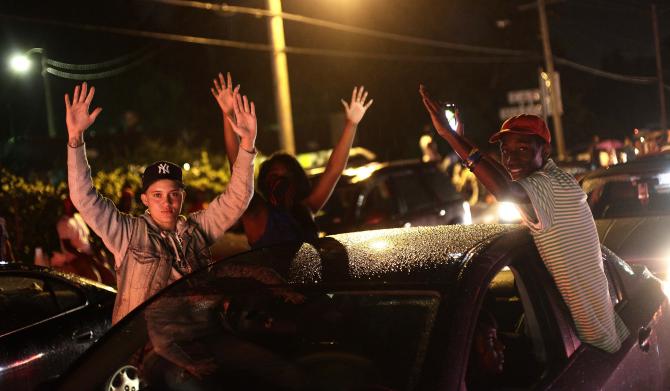How Ferguson Has Exposed a Civil Rights Generational Divide

This past week’s racial crisis in Ferguson, Mo., has uncovered a divide within the black community—one based on generation, class and the cloudy political vision offered by African-American politics in the Obama age.
When asked who is the leader of the ongoing protests since the killing of Michael Brown—protests that have triggered Missouri’s governor to declare a state of emergency and curfew—one young man from St. Louis answered, “Do we have a leader? No,” and he went on to suggest that the martyred Brown, himself, offered the best example of leadership for Ferguson’s angry and alienated young people.
As last week progressed, protests on the streets of that city operated on two separate tracks: Civil rights leaders have organized effective nonviolent marches even as young protesters, and some would-be outlaws, have descended into violence and looting in parts of the city.
Leaders such as the Revs. Jesse Jackson and Al Sharpton have visited Ferguson, but their pleas for calm have been ineffective.
Ironically, the black person who provided arguably the most visible leadership during the Ferguson events has been Missouri Highway Patrol Capt. Ron Johnson, whose forceful, yet compassionate, presence and policing tactics helped to temporarily defuse the escalating crisis.
That young people in Ferguson refused to heed calls for nonviolence should come as no surprise. Demonstrations at the height of the civil rights era featured sporadic incidents of violence waged by angry black Americans outraged at racism and poverty, but unwilling or unable to commit to the discipline of nonviolence. Dr. Martin Luther King Jr. encountered these episodes in Birmingham, Ala., and Memphis, Tenn., and was famously heckled when he visited Watts in the aftermath of Los Angeles’ 1965 rebellion.
What makes the current situation different from the 1960s is that we have no Stokely Carmichael or Black Panthers who can properly relate to the young people in and outside of Ferguson, who have used the language of violence to convey rage and disappointment.
Make no mistake. Brown’s killing is not the root cause of Ferguson’s violence. It’s merely the spark that triggered it. Poverty, segregation, unemployment and a climate of anti-black racism haunt tiny Ferguson and the wider St. Louis metropolitan area. Riots, Dr. King reminded us, are “the language of the unheard” and oppressed.
It’s no wonder, then, that local young black men and women can’t identify a single black leader or organization as the leader of the chaotic demonstrations in which they have participated.
National black political leaders from the civil rights era have tried, through organizational outreach, speeches, media—both traditional and social—marches and demonstrations to reach out to and stay connected with a new generation of young people. But this effort bumps up against the limitations of resources and outreach.
America’s racial underclass, the off-the-grid hustlers and entrepreneurs who many black elites ignore or demonize, rarely sees political leaders of any color advocating for them.
The divide, while generational on the surface, is also fueled by class, as young people with education, networks and access tend to view politics as a long-term process—one that comes with victories, but also compromise and setbacks. Millions of young blacks have no entrée to the nuances of American democracy and racial struggle. Their world is more painfully straightforward and wrenching—black folks get shot in the streets with no hope of justice.
The ideal response to this tragedy, one that our national civil rights narrative promotes but, in fact, was never entirely true, is for the entire black population of Ferguson to put on their best church clothes and nonviolently show the world what happened to Michael Brown.
But in the age of Obama, these young people find the lessons of the civil rights era increasingly hard to comprehend. Certainly, the frequency of police killings of black men, the Iraq War-styled police presence in Ferguson and the numbing persistence of racial segregation and violence makes talk of racial progress ring hollow.
Putting civil rights leaders in a tough spot. They’re wary of being too critical of President Barack Obama’s track record on race and poverty, aware that the attorney general is his staunch ally and they’ve been pilloried by conservatives as “race hustlers,” eager to arouse the rabble. But perhaps most importantly, the very constituency they often claim to speak for—the voiceless black youth who have come out in Ferguson over the past week—find these leaders’ voices indistinguishable from the political white noise that only unfettered violence seems capable of breaking through.
Peniel E. Joseph, a contributing editor at The Root, is founding director of the Center for the Study of Race and Democracy and a professor of history at Tufts University. He is the author of Waiting ’Til the Midnight Hour: A Narrative History of Black Power in America, Dark Days, Bright Nights: From Black Power to Barack Obama and Stokely: A Life. Follow him on Twitter.















